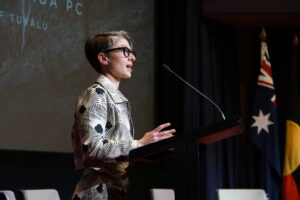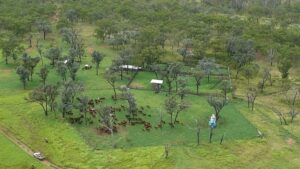The Government needs to stop using dodgy “land use” accounting to suggest emissions are falling
It is time for the Government to stop using land use figures to make their greenhouse gas emission projections look better than they really are.
Australia’s history of action on climate change has long been tainted by the push to include land use in the measure of emissions.
This first happened for the Kyoto Protocol when the Howard government lobbied hard for land use (technically known as “LULUCF” or “Land use, land use change and forestry”) to be included. The reason the Howard government wanted this is because it knew the Kyoto base year of 1990 was a year in which a massive amount of land clearing occurred in Australia. Land clearing is calculated as being an increase in emissions (because you have reduced the number of trees that capture CO2 naturally).
This means that not clearing as much land as in that base year makes it look like you have reduced emissions. And if the base year was when you cleared a record amount of land, then it is very easy to look like you are reducing your emissions.
It’s a bit like saying because you don’t drink on average as much alcohol as you did on the night of your 21st birthday that means you have reduced your alcohol consumption.
Unfortunately, the inclusion of land use continued under the Paris Accord, which has 2005 as its base year – another year in which Australia had unusually high levels of land clearing (especially in Queensland). This allows Minister Bowen to stand up and say Australia’s annual emissions to June this year are 24.5% below what they were in the year to June 2005. That sounds wonderful, but when we take out land use and only count actual emissions, the cut is just 1.2% – not exactly close to being on the path to a 43% cut by 2030.
Worse still the calculations of land use are very problematic.
The government needs to estimate how much carbon dioxide it thinks has been sucked up by trees and is stored in soil. However, the land sector is very vulnerable to the impacts of climate change. A hotter and drier climate means our vegetation is at increasing risk, and the soil is losing more carbon than ever.
And just how do you accurately measure the entire land mass of Australia and all its trees? The government uses modelling and satellite imagery, and it regularly revises how many emissions have occurred in the land sector – including in the past, if it argues the satellite was not as accurate as it is now!
And would you believe it, but it has happened again.
We might have hoped that a new government, committed to action on climate change, would not use such dodgy accounting. But no.
Last year the Government estimated from 1990 to 2020 there had been a cumulative 1,816Mt of greenhouse gas emissions due to land clearing. But this year that has astonishingly been revised down to 1,662Mt. That is an 8.5% drop in emissions from that sector!
The clever accounting continues into the projections.
Last year the Government estimated that from 2023 to 2030 Australia would emit a cumulative 3,624Mt of CO2. This year that has been revised down to 3,395Mt CO2. That is a fall of 229Mt – a very good thing. Fewer emissions is better!
But unfortunately 137Mt (60%) of that improved outlook comes from projecting lower land use emissions. By contrast only 62Mt of the cumulative fall in emissions comes from the trumpeted new electricity and transport abatement figures.
When we take away the improved land use projections things look much less positive than the government would have us believe. And when we exclude land use completely, Australia’s emissions are projected to be just 23% below 2005 levels by 2030 – barely half the way to 43%.
It is time for the Government to be clear about what is really going on, and stop including land use in its emissions accounting.
For too long Australia has used dodgy accounting to avoid reducing emissions – the time has come to be honest about measuring and projecting our actual emissions.
Between the Lines Newsletter
The biggest stories and the best analysis from the team at the Australia Institute, delivered to your inbox every fortnight.
You might also like
The Climate Crisis is an Integrity Crisis | Polly Hemming
I am starting my address to this year’s summit in the exact same way that I started last year’s address. Because it is just over a year since I delivered these same words, which aren’t actually my words. They are the words of our Climate Change Minister, and they provide a baseline of sorts for what progress has been made in that time.
Here are 23 Times Carbon Offsets Were Found to be Dodgy
Carbon offsetting has received a lot of attention recently. As businesses and governments look to meet their climate targets, many are turning to carbon offsets. That is, they are paying someone else to reduce or avoid putting greenhouse gases into the atmosphere, so they don’t have to.
The Wellbeing Framework’s metric of greenhouse gas emissions is the same one used by past climate-change denying governments
The most important issue for Australians’ wellbeing is to reduce greenhouse gas emissions and yet the government is not being honest about its progress in the the Wellbeing Framework.


